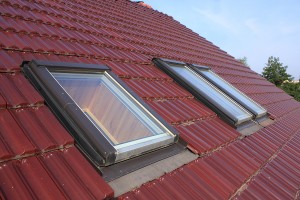A Feature-Filled Roof Is A Risky Roof
 Despite the fact that the phrase “roof over our heads” is synonymous with safe shelter, very few people give much thought to how important the roof is to the overall welfare of the home and its residents. To many, the roof is just something that keeps the rain out, and some make many modifications to the roof in order to make it more “useful,” installing skylights, adding solar panels, or even just old fashioned features like chimneys. Various vents for other appliances as well as other features all act as points of penetration on a roof where rain water or melt water from a spring snow melt can get into a home.
Despite the fact that the phrase “roof over our heads” is synonymous with safe shelter, very few people give much thought to how important the roof is to the overall welfare of the home and its residents. To many, the roof is just something that keeps the rain out, and some make many modifications to the roof in order to make it more “useful,” installing skylights, adding solar panels, or even just old fashioned features like chimneys. Various vents for other appliances as well as other features all act as points of penetration on a roof where rain water or melt water from a spring snow melt can get into a home.
This means that it is up to whomever installed such new additions to the roof to ensure they did their job thoroughly and responsibly by adding a waterproof sealant around the seams of these additions. Caulk, roof cement and other substances will do the job adequately provided the installation was done with care.
However this does not mean that once the job is done, you can simply forget about everything and leave your roof to its own devices. That roof is a shield, protecting residents from rain, snow, cold and many other elements of nature. It is works 365 days a year, against everything that Maryland’s environment has to offer. Sealant is usually some kind of wet substance that is initially applied, then dries off after time. Constant exposure to wind, rain, snow and humid summer heat will eventually wear away at these sealants and they will need to be replaced. The more features you have permanently installed on or within your roof, the more sealant has been used, the more likely you are to need to replace some of it.
This is why you should always try to conduct an annual “inspection” to gauge the state of your roof before a big seasonal change, like winter. Take the time to climb to your roof and go over chimneys, vents, skylights and other fixtures to check the sealant. If you notice that some of it has expanded, then dried out and eroded, you’re already on the way to getting leaks in your roof that can lead to eventual water damage within your home. Take the time to replace old sealant with new, or if you’re not confident about it, call an expert, like AA Action Waterproofing to assess your entire home and see whether there are any vulnerabilities in the structure that can be waterproofed to prevent costly repair.
